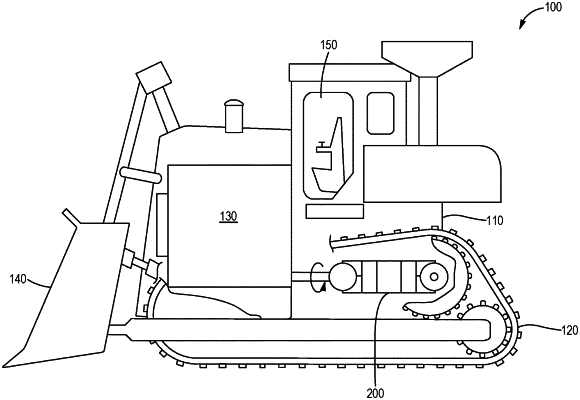| CPC H02P 23/30 (2016.02) [E02F 9/207 (2013.01); E02F 3/7609 (2013.01); E02F 3/841 (2013.01); E02F 9/02 (2013.01)] | 18 Claims |

|
1. A work machine, comprising
a frame;
a traction system supporting the frame;
a power source mounted on the frame;
a switched reluctance motor;
an inverter configured to control power to the motor from the power source; and
a controller configured to:
receive a desired torque command signal indicating a desired torque,
determine if the desired torque is between an upper threshold and a lower threshold which corresponds to a positive and a negative torque load which produce a minimum current,
use pulse width modulation to produce a PWM adjusted torque command if the desired torque is between the upper threshold and the lower threshold, the PWM adjusted torque command being configured to cycle between the upper threshold and the lower threshold to produce the desired torque, and
command the motor based on the PWM adjusted torque command.
|
|
7. An electric drive system for a work machine, comprising:
a switched reluctance motor;
an inverter configured to control power to the motor from a power source; and
a controller configured to:
receive a desired torque command signal indicating a desired torque,
determine if the desired torque is between an upper threshold and a lower threshold,
use pulse width modulation to produce a PWM adjusted torque command if the desired torque is between the upper threshold and the lower threshold, the PWM adjusted torque command being configured to cycle between the upper threshold and the lower threshold to produce the desired torque,
wherein the PWM adjusted torque command is produced by generating a PWM reference signal and comparing that signal to the desired torque, and
command the motor based on the PWM adjusted torque command.
|
|
13. A method of overcoming a dead-band in a switched reluctance motor, comprising:
receiving a desired torque command signal indicating a desired torque;
determining if the desired torque is between an upper threshold and a lower threshold which correspond to a positive and a negative torque load which produce a minimum current required for sensor-less operation of the switched reluctance motor;
using pulse width modulation to produce a PWM adjusted torque command if the desired torque is between the upper threshold and the lower threshold, the PWM adjusted torque command being configured to cycle between the upper threshold and the lower threshold to produce the desired torque; and
commanding the motor based on the PWM adjusted torque command.
|